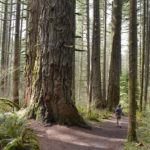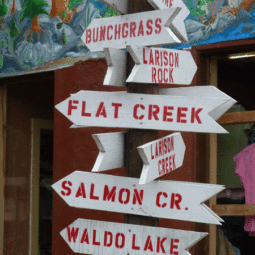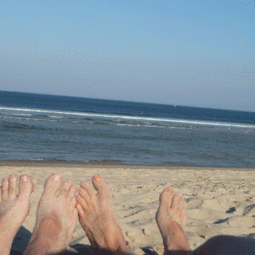I met some great new trees here that I would see throughout my drive in the South. They had graceful, white Crape Myrtle trees at the entry to the park. I didn’t realize Crape Myrtles could have such a perfect form, since many I had seen were more rangy. I also met Southern Live Oaks (Quercus virginiana), some of which were probably over 300 years old on this site. Tall Cypress trees grow well in the wet bayou as well and were used often for building construction.
This historical site included some buildings from the Acadian people who were moved from the Canadian areas around Nova Scotia down into Louisiana in the mid-1700s. Among other hardships, the climate is so different that they had to rediscover how to survive.
This particular site became a sugar cane plantation and I had a chance to tour the main house and some outbuildings. The outbuildings had been reconstructed, but gave a good sense of what tools people had to work with. I found it interesting that they used squash for pot scrubbers and hollowed out others for bowls or ladles. They took old corn cobs and wove them together to make brooms.
Back on the road, the landscape really began to change. The freeway became a long expanse of bridges after awhile that were taking us above the bayous below. Tall cypress trees shot out of the swampy waters. It was really gorgeous.
I got into New Orleans that night starving and worn down from the long drive. With a little help from Yelp!, I found a great restaurant in the French Quarter called Acme. I enjoyed a lovely, dark local beer with half a dozen oysters on the half shell. Oh momma… so good. I followed it up with étouffée, a Cajun dish that starts with rue, adds in fresh seafood (in this case crawdads) and gets poured over rice. Amazing.
I have to admit that I was not impressed with the French Quarter. It was a Friday night, drunk people were out en masse, tourists packed the streets, souvenir shops had horrible wares to promote, street performers of the usual sort were at every corner, and I could just sense that this was prime pick-pocket grounds. It reminded me of the Red Light District in Amsterdam. I love Amsterdam though because the Red Light District is one small part of a really beautiful city.
The next day I explored the Garden District a bit and was entertained, but not blown away. The photo above shows the former home of writer Ann Rice. The architecture here is interesting, but having been to France to see it in its original form, I didn’t feel like I was seeing anything new necessarily.
I also found the residential landscapes pretty bland. Historically it is interesting because there are a lot of non-native, tropical plants that were brought in from the Carribean. One house after another had the same palms and lines of boxwood hedges, so I got a bit bored.
This Southern Live Oak does show something special about the neighborhood: it’s age. This old gnarly tree has eaten away at the curd and into the sidewalk. In such a young country, it is interesting to see signs of age. Overall I was impressed with Louisiana for their food, history and landscape, but I doubt I’ll be making a trip back to New Orleans.












 This cluster was about the siz
This cluster was about the siz




 I start with a
I start with a


I am throughly enjoying your blog, your entries, photos, etc. BUT as a Southerner/and American I was a bit taken-aback by your New Orleans entry…Of course you know of Katrina, which left N.O. in a MUCH different state than prior to the hurricane, especially in regards to vegetation, trees, etc. She took MUCH of it with her…N.O. in general Is Not the same city in any way shape or form, it’s a totally different place, and different as well in the respect that much of it’s original inhabitants are gone elsewhere…As far as Bourbon Street/quarter goes, that’s always been a tourist trap, and unfortuanetly since the storm most of the truely REAL N.O. spots w/her people are destroyed and gone. Wish you could’ve gone before the storm…..much of the old homes are not the same/devestation there as well……unless you spent a lot of time there before Katrina it’s hard to understand the massive changes……….
Personally, I found the photos amazing! However, your commentary seems a bit…well, negatively arranged to say the least. I am happy for you that you have had opportunities to visit outside the U.S. Myself, not so much but I am positive that if I had I would introduce my adventures as blessings to my readers. No matter where one visits it is proper etiquette to express all the positives of one culture even if by comparison to another.
Every place has good and bad aspects to it. I stand by not being a big fan of the French Quarter, but as I mentioned my trip did introduce me to some amazing food, landscapes and cultural history. Perhaps from my traveling and living abroad, I see new places as complex, interesting experiences – not simply as all perfect places or experiences. And that’s why I love traveling and experiencing new places. That complexity and range of experiences is what I find fascinating. This post was not meant to be a glowing review of these places, but rather a reflection of my experience there.